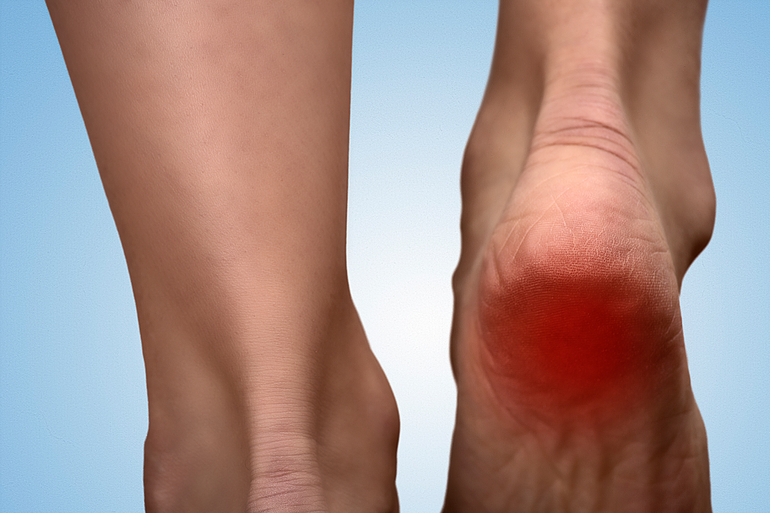The Centers for Advanced Orthopaedics is redefining the way musculoskeletal care is delivered across the region with locations throughout Maryland, DC, Virginia and Pennsylvania.
What’s Causing My Heel Pain?

If there is a problem with your heel, you’re going to feel it with every step you take, and that can make everyday tasks extremely uncomfortable. Fortunately, heel conditions tend to respond very well to treatment, so long as you understand the root cause of your discomfort. In today’s blog, we take a closer look at five of the most common causes of heel pain, and we share how you can get to the bottom of your pain so that treatment will be most effective.
Five Common Causes Of Heel Pain
Here’s a look at five of the most common conditions that present with heel pain and discomfort:
- Heel Bursitis - Heel bursitis is caused by inflammation of the fluid-filled sac called the bursa, which helps to lubricate tissues so that they can move more easily. Ill-fitting shoes or repetitive stress on the feet can lead to bursa inflammation, which can make walking painful and uncomfortable. Resting, changing your shoes and taking anti-inflammatory medications can oftentimes help relieve this inflammation and discomfort.
- Stone Bruise - Oftentimes called a stone bruise or a heel bruise, this type of injury leaves patients feeling like they just stepped on a small rock or pebble with their bare heel. Bruises anywhere on your body can be uncomfortable if you touch them or put pressure on them, so walking on a bruise certainly will bring about symptoms. Landing hard on your feet or stepping on a stone or similar hard object can lead to heel bruises. Similar to bursitis, stone bruises tend to respond well to conservative techniques that help to limit stress on the area.
- Heel Fracture - If you experience a significant trauma to the bottom of your foot, you can go beyond a bruise and actually fracture your heel. This is known as a calcaneal fracture, and they are common in high-energy events like a car accident or fall from a great height. If you suspect that you may be dealing with a calcaneal fracture, you’ll want to connect with a foot and ankle specialist. The calcaneal needs to heal correctly to ensure stability in the bone and foot, and oftentimes it can heal in an unstable manner unless it’s managed professionally. This can lead to chronic foot pain and an increased likelihood of arthritic degeneration.
- Plantar Fasciitis - Plantar fasciitis is caused by inflammation of the fibrous band of connective tissues that connect your heel to your toes. Depending on the location of this inflammation, symptoms can develop in your heel or on the underside of your arch. Plantar fasciitis tends to only get worse unless it is proactively treated, so don’t just keep going about your day in hopes that it will eventually get better. If your heel pain is worse with your first few steps in the morning, it’s a tell-tale sign of plantar fasciitis, and you should connect with a foot specialist.
- Heel Spurs - One final condition that we’ll spotlight is heel spurs, and they occur when calcium deposits form on the underside of your heel, irritating nearby soft tissues. Your body is constantly working to replace old bone with new, healthy bone, but if this process goes awry or you injure your heel, small bone spurs can develop on your heel and damage soft tissues as you walk. Symptoms can sometimes be controlled with conservative techniques, but larger spurs may need to be surgically addressed, especially if they are irritating or compromising the integrity of your Achilles tendon
The best way to figure out what’s causing your heel pain is to connect with a foot and ankle specialist like the ones you’ll find at The Centers For Advanced Orthopaedics. We’ll be able to give you a comprehensive diagnosis, figure out your issue and set you up with an individualized treatment plan. Don’t let heel pain make every step uncomfortable. Connect with a specialist, develop a treatment plan and get back to moving without heel pain. For more information, contact our team today at (703) 584-2040.